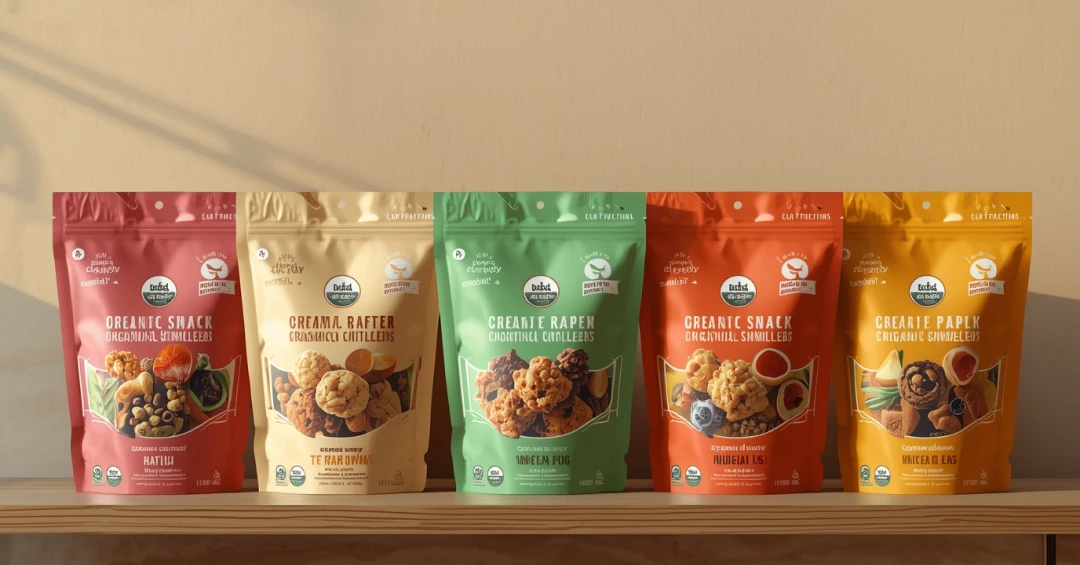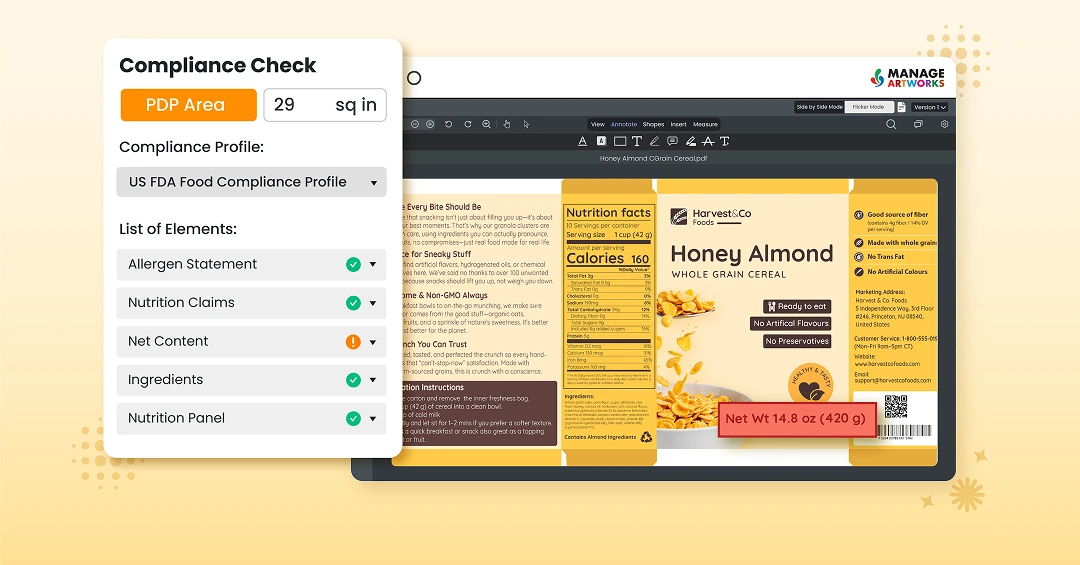In today's global market, artwork packaging is not just about aesthetics but a legal requirement. An incorrect ingredient, outdated claim, or a missing mandatory symbol can lead to costly recalls, fines, and reputational damage.
From a regulatory perspective, navigating compliance across multiple countries and jurisdictions is a complex challenge. Changing regulations, language-specific requirements, and regional laws make it challenging for packaging artwork to remain error-free.
This is why an Artwork Management System becomes critical in collaborating on design and enforcing compliance to reduce risk and smooth approvals.
The Compliance Bottlenecks in Traditional Artwork Processes
Before diving into solutions, let’s look at why traditional artwork processes are a compliance nightmare:
- Manual Reviews and Email-based Approvals: Regulatory teams often rely on endless email threads, spreadsheets, and PDF markups to review packaging changes. This unstructured approach leads to:
- Missed feedback that gets buried in long email chains.
- Version confusion between stakeholders who end up working on outdated files.
- Delayed approvals due to unclear roles and poor accountability.
- Difficulty Tracking Changes: Without a centralized system, tracking who made what change and why becomes a guessing game. Regulatory teams waste hours:
- Comparing old vs. new versions manually.
- Hunting down stakeholders for inputs, approvals, and sign-offs.
- Risking non-compliance due to overlooked edits.
- Mislabeling Risks from Communication Breakdowns: A simple miscommunication between marketing, regulatory, and packaging teams can lead to:
- Incorrect ingredient lists or inaccurate quantities.
- Non-compliant claims, such as unverified health benefits or incorrect nutritional information.
- Missing mandatory symbols such as recycling or safety warnings.
How Artwork Management Systems Solve Compliance Challenges
An Artwork Management System (AMS) acts as a single source of truth for packaging compliance. Here’s how it helps brands avoid costly compliance mistakes:
- Version Control & Audit Trails: Every change is logged with an artwork management system. Brands have absolute visibility into who edited what, when, and why. An audit trail is always present if a regulatory inspection occurs, creating much-needed transparency.
- Centralized Collaboration: Regulatory, marketing, and packaging teams work on one centralized platform. This eliminates misplaced emails and disconnected comments. Role-based access ensures that only authorized individuals in the approval chain can sign off on critical changes.
- Automated Approval Workflows: Pre-approved workflows ensure no compliance step is skipped, keeping the process traceable. Regulatory checkpoints are automatically enforced before final approval, so nothing slips through the cracks.
- Built-in Compliance Checks: A modern artwork management system enforces necessary checks, so any missing data is flagged in real time. With such a regulatory checklist and built-in language and regional compliance rules, global market requirements are effortlessly met.
Benefits for Regulatory Teams
For regulatory teams, efficiency and accuracy aren’t just goals but necessities. An effective Artwork Management System doesn’t just streamline workflows; it transforms compliance from a constant challenge into a competitive advantage. Here’s how:
- Fewer Errors & Last-Minute Changes: Automated checks help catch mistakes early, preventing costly errors from escalating into compliance violations. By reducing reliance on manual reviews, the risk of human oversight drops significantly, ensuring packaging meets regulations the first time.
- Faster Regulatory Submissions: With an AMS, artwork files are consolidated and approved more efficiently, helping teams shorten submission timelines. Critical documents are centrally stored and easy to retrieve—eliminating last-minute chases.
- Better Risk Mitigation: Every decision is fully traceable, eliminating team ambiguity and finger-pointing. Since compliance is built into the process, regulatory risks are minimized before copies go to print.
- Improved Audit Readiness: Instant access to end-to-end change histories and approvals means no more digging through endless emails or disorganized shared drives. When auditors request documentation, everything they need is available at the click of a button, saving time, stress, and potential compliance headaches.
Conclusion
Regulatory teams shouldn’t have to play detective, scrambling to verify packaging changes, chasing approvals, or fixing errors on artwork copies sent to printing. A platform like ManageArtworks turns artwork management into a compliance advantage.
The platform’s many AI-enabled capabilities ensure packaging compliance by automating checks, enforcing workflows, and preserving complete traceability.
Are you prepared to reduce the risks associated with compliance?
Explore how AI-enabled ManageArtworks can streamline your packaging approvals.
Frequently Asked Questions
Today’s brands face several packaging artwork compliance challenges, such as:
- Diverse and complex regulations across different countries.
- Unique set of labeling requirements in each market.
- Ensuring proper translation and cultural appropriateness.
- Environmental regulations regarding packaging materials and recyclability.
Failing to meet necessary compliance regulations can result in costly penalties, product recalls, poor customer loyalty, and/or damage to a brand’s reputation.
An artwork management system brings several benefits to the table, including:
- Fewer errors
- Faster regulatory submissions
- Better risk mitigation
- Improved audit readiness





.webp)
















